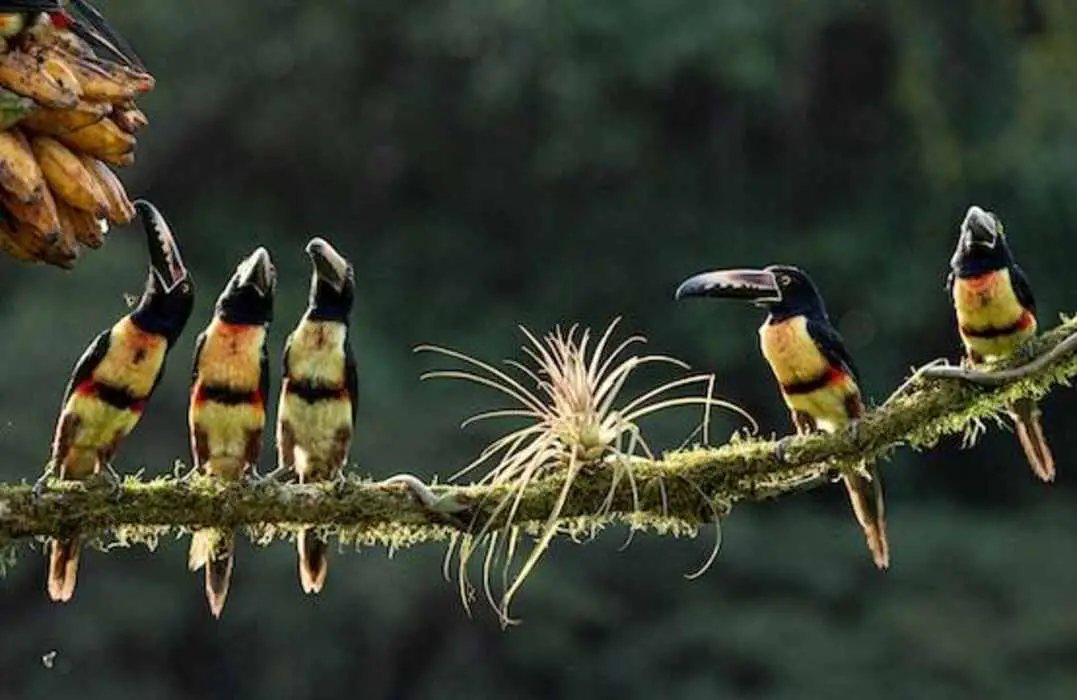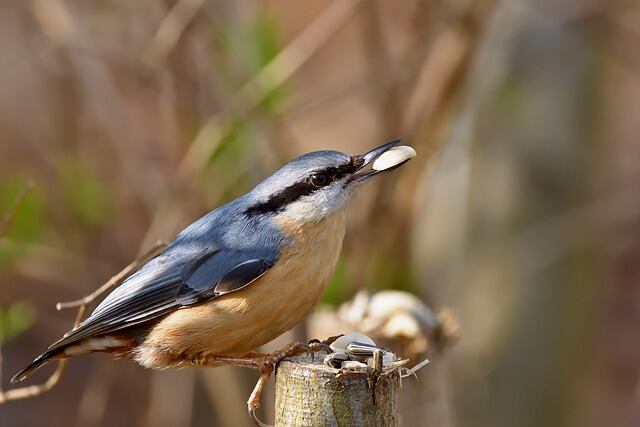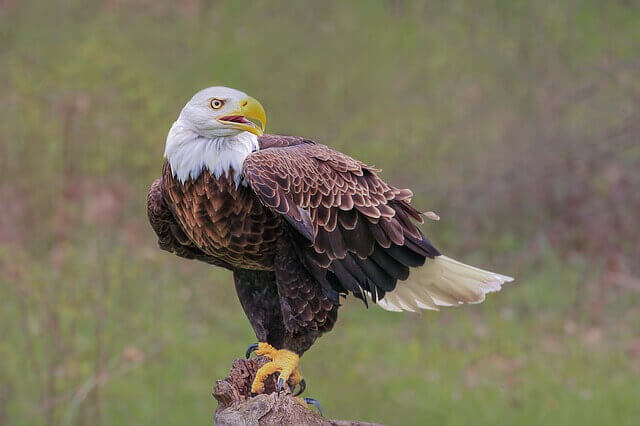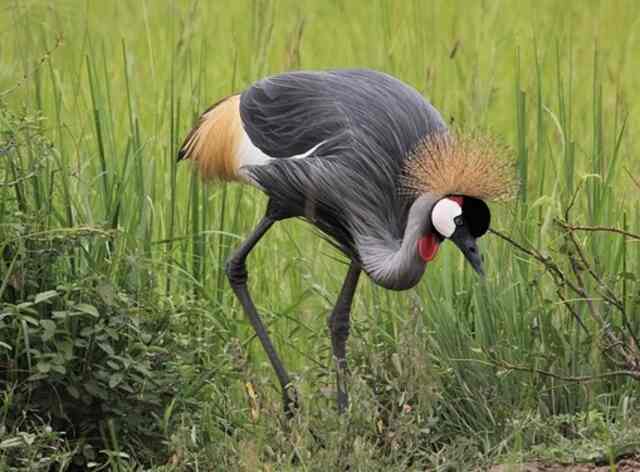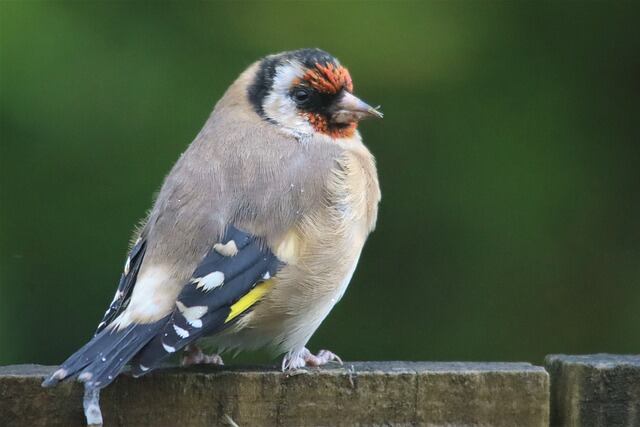Venturing into the captivating realm of avian taxonomy, we delve deep into the intricate classification of birds. From the majestic eagles soaring in the skies to the tiny hummingbirds gracing our gardens, the diversity within the avian kingdom is astounding.
In this exploration, we will unravel the fascinating hierarchy that categorizes these feathered wonders, shedding light on the evolutionary relationships and unique characteristics that define each avian order, family, and species.
Join us as we navigate the branches of avian classification and gain a deeper understanding of our feathered friends.
Table of Contents
- 1 What Classification are Birds?
- 2 Understanding Avian Taxonomy
- 3 Bird Families: A Closer Look
- 4 Bird Orders: Diverse and Distinctive
- 5 Exploring Bird Classes
- 6 Renowned Bird Species
- 7 Evolutionary Relationships Among Birds
- 8 The Importance of Bird Classification
- 9 The Challenges of Bird Classification
- 10 Future Directions in Avian Taxonomy
- 11 Conclusion
- 12 FAQs: What Classification are Birds?
- 12.1 What is avian taxonomy?
- 12.2 How are birds classified?
- 12.3 What is binomial nomenclature?
- 12.4 What are bird families?
- 12.5 What are bird orders?
- 12.6 What are bird classes?
- 12.7 Can you give some examples of renowned bird species?
- 12.8 How do scientists study the evolutionary relationships among birds?
- 12.9 Why is bird classification important?
- 12.10 What are the challenges of bird classification?
- 12.11 What are future directions in avian taxonomy?
- 13 Author
What Classification are Birds?
Birds are classified as a group of warm-blooded vertebrates belonging to the class Aves. This class includes more than 10,800 to 11,032 species of birds, ranging from tiny hummingbirds to large ostriches. All birds share several key characteristics, including feathers, wings, beaks, and a unique respiratory system that allows for efficient oxygen intake during flight.
Birds are also known for their ability to lay eggs and their highly developed senses, including excellent vision and hearing. Within the class Aves, birds are further classified into various orders, families, and species based on their physical characteristics, behavior, and evolutionary history.
Some of the most well-known bird orders include Passeriformes (songbirds), Falconiformes (birds of prey), and Strigiformes (owls). Overall, the classification of birds provides a useful framework for understanding the diversity and complexity of these fascinating creatures.
Understanding Avian Taxonomy
Avian taxonomy, also known as bird classification or bird taxonomy, refers to the scientific system of organizing birds into different groups based on their shared characteristics and evolutionary relationships. This system allows scientists to better understand the vast diversity of bird species and their ecological roles.
At the core of avian taxonomy is the idea of hierarchical classification, which involves grouping organisms into increasingly specific categories. The highest level of this hierarchy is the class, followed by the order, family, genus, and species.
Scientific names, using binomial nomenclature, play a crucial role in avian taxonomy. Each species is given a unique two-part name that refers to its genus and species, allowing for clear and precise communication across languages and borders.
The Role of Avian Taxonomy
Understanding avian taxonomy is essential for a range of scientific fields, including ecology, genetics, and wildlife management. It allows researchers to identify and differentiate between different species, track population trends, and inform conservation strategies.
By grouping birds into orders, families, and other categories based on shared characteristics and evolutionary relationships, avian taxonomy provides insights into the diversity and complexity of the avian world. This knowledge is crucial for both scientific research and the conservation of these remarkable creatures.
In the following sections, we will explore in more detail the different levels of bird classification, notable bird families and species, the challenges of bird classification, and future directions in avian taxonomy.
Bird Families: A Closer Look
When it comes to bird classification, families are a crucial level of organization. A bird family is a group of related species within an order. For example, the Passeriformes order, which includes more than half of all bird species, has over 100 families. Understanding bird families can provide insights into the evolutionary relationships between different species and their ecological roles.
What Defines a Bird Family?
Members of the same bird family share certain physical characteristics, such as beak shape or feather coloration. These traits can be used to distinguish them from other families. Additionally, species within a family typically exhibit similar behaviors, such as feeding habits or mating displays.
The classification of birds into families is not always straightforward, and there can be disagreements among taxonomists. Some species may be reclassified into a different family as new evidence emerges.
Examples of Bird Families
There are many different bird families, each with their unique characteristics. Here are a few examples:
| Bird Family | Distinguishing Features | Ecological Role |
|---|---|---|
| Accipitridae (Hawks, Eagles) | Sharp talons, hooked beaks, excellent eyesight | Top predators in many ecosystems |
| Alcedinidae (Kingfishers) | Large, broad bills, small feet, bright plumage | Specialize in catching fish and other aquatic prey |
| Corvidae (Crows, Jays, Magpies) | Intelligent, social, often highly vocal | Play important roles in seed dispersal and scavenging |
These families are just a few examples of the incredible diversity of bird life. Each family has its unique adaptations and contributions to the ecosystems they inhabit.
Understanding bird classification, including families, can help us better understand the complex relationships between different species and their roles in the environment. As we continue to learn more about the incredible diversity of avian life, we can work to protect and conserve it for future generations.
Bird Orders: Diverse and Distinctive
Bird orders are crucial in avian taxonomy, as they represent groups of related families that share defining characteristics. There are currently 40 recognized bird orders, each with their unique features and evolutionary history. The classification system helps biologists study birds by grouping species with similar characteristics together.
One of the most prominent bird orders is Passeriformes, also known as perching birds. This order includes about 60% of all bird species and is characterized by their distinctive feet. Another order, Falconiformes, includes birds of prey such as hawks, eagles, and falcons. These birds have keen eyesight and powerful talons, making them formidable hunters.
Bird Orders Chart
| Bird Order | Number of Species | Examples of Families |
|---|---|---|
| Passeriformes | Approximately 6,000 | Finches, thrushes, sparrows, warblers |
| Falconiformes | Approximately 360 | Hawks, eagles, falcons, vultures |
| Charadriiformes | Approximately 350 | Gulls, terns, sandpipers, plovers |
| Columbiformes | Approximately 344 | Pigeons, doves |
Other important bird orders include the Anseriformes, which includes ducks and geese, and the Psittaciformes, which includes parrots. Each bird order has its unique niche in the ecosystem, contributing to the astonishing variety and complexity of bird life.
Understanding bird orders is essential in avian taxonomy as it helps scientists determine the evolutionary relationships among different bird groups. Future research in this area will likely uncover new species and expand our knowledge of the avian world.
Exploring Bird Classes
At the broadest level, birds are classified into two main classes: Aves and Archaeornithes. The Aves class comprises all modern birds, while the Archaeornithes class includes extinct bird species that lived during the Jurassic and Cretaceous periods.
Birds in the Aves class share several characteristics, such as a beak with no teeth, a lightweight skeleton, and feathers, which are essential for flight and thermoregulation. For example, the penguin, the hummingbird, and the ostrich are all members of the Aves class but have distinct morphological and physiological adaptations that suit their unique ecological niches.
The Archaeornithes class is less diverse, consisting of only a few species of extinct birds. They are characterized by their reptilian features, such as teeth, long tails, and clawed wings. The most well-known Archaeornithes species is the Archaeopteryx, which is considered a transitional form between reptiles and birds.
The classification of birds into classes helps scientists understand the evolutionary history of these animals and sheds light on the diversity of morphological and physiological adaptations seen in modern birds.
Renowned Bird Species
From the majestic bald eagle to the tiny hummingbird, birds represent some of the most diverse and extraordinary species on our planet. In this section, we will explore some renowned bird species from different orders and families, showcasing their unique traits, habitats, and conservation status.
The American Bald Eagle
The American bald eagle, or Haliaeetus leucocephalus, is one of the most recognizable bird species in the world. Found exclusively in North America, this majestic raptor is a symbol of freedom and national pride. Its distinctive white head, brown body, and sharp talons make it a formidable predator in the wild. Unfortunately, habitat loss, hunting, and pollution led to a decline in eagle populations, and they were listed as endangered in the 1970s. Thanks to successful conservation efforts, however, their numbers have rebounded, and they were removed from the endangered species list in 2007.
The African Grey Parrot
The African grey parrot, or Psittacus erithacus, is a highly intelligent bird known for its remarkable vocabulary and ability to mimic sounds and speech. Native to the rainforests of West and Central Africa, these parrots are popular as pets, but their capture and exportation for the pet trade have led to a decline in wild populations. They are currently listed as vulnerable, and efforts are underway to protect their habitats and regulate their trade.
The Emperor Penguin
The emperor penguin, or Aptenodytes forsteri, is the largest of all penguin species and is found exclusively in Antarctica. These flightless birds have adapted to the harsh polar climate, with thick feathers and a layer of blubber to insulate them from the cold. They are also remarkable parents, with males incubating the eggs while females hunt for food. Emperor penguins face threats from climate change, overfishing, and habitat disturbance, and their populations are considered near threatened.
These are just a few examples of the incredible diversity of bird species. Each one is a unique product of its evolutionary history, and classifying them helps us to better understand their ecological roles and conservation needs.

Evolutionary Relationships Among Birds
The classification of birds is not only based on their shared characteristics but also on their evolutionary relationships. The study of avian phylogeny has expanded significantly in recent years, thanks to the adoption of molecular techniques and cladistics.
Birds are traditionally classified based on their morphological traits, but this approach has its limitations. Molecular techniques involve analyzing the DNA sequences of different bird species to identify common ancestors and evolutionary relationships. Cladistics is the method of classification based on evolutionary relationships, which takes into account the sharing of derived characteristics.
One of the major breakthroughs in the classification of birds using molecular techniques came with the discovery that birds are a type of dinosaur, specifically theropods. This discovery overturned the traditional view that birds evolved from reptiles. Instead, it suggests that birds are the last surviving descendants of theropod dinosaurs that roamed the earth over 65 million years ago.
Major Groups in the Bird Evolutionary Tree
The bird evolutionary tree is constantly evolving, with new information and analyses leading to revisions in the classification of different bird groups. However, there are some major groups that have been established through molecular techniques and cladistics.
| Group | Characteristics |
|---|---|
| Palaeognathae | Primitive birds that are flightless and have a flat sternum. Includes ostriches, emus, and kiwis. |
| Galloanserae | Includes landfowl and waterfowl. Believed to have diverged from a common ancestor around the time of the dinosaurs. |
| Neoaves | A diverse group of birds that includes more than 95% of all bird species. Includes passerines, raptors, and pigeons. |
The classification of birds based on evolutionary relationships has significant implications for understanding their ecological roles and conserving their populations. It can also aid in identifying new species and tracking population trends, which is essential in guiding conservation efforts.
In conclusion, the study of avian phylogeny has led to significant advances in the classification of birds based on their evolutionary relationships. The adoption of molecular techniques and cladistics has helped to refine our understanding of bird taxonomy and expand our knowledge of the astonishing diversity of avian species.
The Importance of Bird Classification
Bird classification, also known as avian taxonomy, plays a crucial role in scientific research, conservation efforts, and our understanding of the astonishing diversity of bird species. By categorizing birds into different groups based on their shared characteristics and evolutionary relationships, scientists can identify new species, track population trends, and inform conservation strategies.
One of the main benefits of bird classification is the ability to study different types of birds and their ecological interactions. By grouping birds into orders, families, and species, scientists can explore their unique traits, habitats, and behaviors. This knowledge is critical in developing effective strategies to protect threatened species and preserve fragile ecosystems.
Bird classification is also essential in identifying new species and tracking population trends. By using molecular techniques and other advanced tools, scientists can detect subtle genetic differences between bird populations and understand how they evolve over time. This information can help researchers develop new conservation strategies and inform the public about the importance of preserving these species.
Overall, bird classification is a valuable tool in understanding the complex relationships between different types of birds and their environments. As we continue to face the challenges of climate change and habitat loss, this knowledge will be critical in protecting these remarkable creatures for future generations to enjoy.
The Challenges of Bird Classification
Bird classification is a complex and continually evolving process that poses several challenges to taxonomists. Here are some of the challenges that are faced in bird classification:
- Bird Categorization: Categorizing birds into well-defined groups can be difficult because of the wide variation within species, leading to uncertainty about relationships between closely related birds. It can be challenging to determine whether birds within a group are sufficiently similar to warrant inclusion.
- Bird Taxonomy: The process of classifying birds is complicated by the fact that species are not static entities and may change over time, leading to taxonomic revisions.
- Debates Over Classification Schemes: There are ongoing debates about the best way to categorize birds. Different classification schemes can be used to sort birds into orders and families, leading to inconsistencies and uncertainties about relationships between species.
Despite these challenges, the need for accurate bird classification and taxonomy remains essential for scientific and conservation purposes.
Future Directions in Avian Taxonomy
The field of avian taxonomy is continuously evolving, and scientists are always discovering new information that helps refine our understanding of bird classification. Emerging trends and technologies are paving the way for new approaches and strategies in bird taxonomy.
Molecular Techniques
One of the most promising trends in avian taxonomy is the use of molecular techniques to identify and classify bird species. DNA sequencing, in particular, has revolutionized the way scientists can study evolutionary relationships among birds. By analyzing DNA sequences from different species, researchers can construct phylogenetic trees that reveal the evolutionary history of birds and their relationships to each other.
| Application | Advantages | Limitations |
|---|---|---|
| Barcoding | Fast, cheap, accurate | Requires fresh or well-preserved samples |
| Phylogenetics | Provides insights into evolutionary relationships | Can be expensive and time-consuming |
Molecular techniques are especially useful for identifying cryptic species, which are species that look very similar but are genetically distinct. By using DNA sequencing to differentiate between cryptic species, scientists can accurately estimate the true diversity of birds, which can inform conservation efforts.
Integrative Approaches
Another trend in avian taxonomy is the use of integrative approaches that combine multiple sources of data to build a more robust understanding of bird classification. For example, researchers may use a combination of morphological, ecological, behavioral, and molecular data to identify and classify a new bird species. By integrating different types of data, scientists can create a more comprehensive picture of bird diversity and evolution.
Advanced Imaging Technologies
Advanced imaging technologies, such as CT scans and micro-CTs, are also contributing to the field of avian taxonomy. These technologies allow researchers to study the internal anatomy of bird specimens without damaging them. By creating detailed 3D models of bird skeletons and internal organs, scientists can identify new features that can help distinguish between different species.
Overall, the future of avian taxonomy looks promising, with emerging trends and technologies providing new ways to explore the diversity and evolution of birds. As new information becomes available, our understanding of bird classification will continue to improve, leading to more effective conservation strategies and a deeper appreciation for the incredible variety of birds.
Conclusion
Overall, avian taxonomy is a crucial field of study that enables scientists to comprehend the remarkable diversity of bird species. Understanding avian taxonomy provides insights into the evolutionary relationships among birds, highlights their ecological roles, aids in identifying new species, and guiding conservation strategies.
However, despite the advances made in bird classification, it remains a challenging and dynamic discipline, with ongoing debates and revisions. Nonetheless, the use of molecular techniques, advanced imaging technologies, and integrative approaches promises exciting future directions in avian taxonomy.
Going forward, it is essential to continue refining our understanding of bird classification to unlock the full potential of this fascinating field of study. By recognizing the importance of bird classification, we can gain a better appreciation of the different types of birds and their astonishing diversity.
FAQs: What Classification are Birds?
What is avian taxonomy?
Avian taxonomy refers to the classification and categorization of birds based on their shared characteristics and evolutionary relationships. It helps scientists and researchers understand the relationships between different bird species and their place in the broader ecosystem.
How are birds classified?
Birds are classified through a hierarchical system of classification. They are organized into various levels, including orders, families, and species. This system allows for the grouping of birds based on their shared characteristics and helps scientists study their evolutionary history.
What is binomial nomenclature?
Binomial nomenclature is the scientific naming system used for organisms, including birds. It assigns a unique two-part name to each species, consisting of the genus name (first part) and the species name (second part). This system ensures clarity and consistency in identifying and classifying bird species.
What are bird families?
A: Bird families are groups of closely related bird species within an order. They share common characteristics and evolutionary history. Examples of bird families include the Falconidae (falcons) and the Accipitridae (hawks and eagles).
What are bird orders?
Bird orders represent larger groups that include several families of birds. They are a higher level of classification and help scientists organize and study the vast diversity of bird species. Examples of bird orders include Passeriformes (perching birds) and Charadriiformes (shorebirds).
What are bird classes?
Bird classes represent the broadest level of classification for birds. There are two main bird classes – Aves (modern birds) and Archaeornithes (ancient birds). These classes have distinct characteristics and evolutionary significance.
Can you give some examples of renowned bird species?
Some renowned bird species include the Bald Eagle (Haliaeetus leucocephalus), known for its iconic appearance and significance as a national symbol in the United States. Another example is the African Grey Parrot (Psittacus erithacus), renowned for its intelligence and ability to mimic human speech.
How do scientists study the evolutionary relationships among birds?
Scientists study the evolutionary relationships among birds through cladistics and molecular techniques. Cladistics analyzes shared characteristics to determine common ancestry, while molecular techniques examine DNA sequences to identify genetic relationships and construct phylogenetic trees.
Why is bird classification important?
Bird classification is important for scientific research, conservation efforts, and understanding ecological interactions. It helps identify new species, track population trends, inform conservation strategies, and deepen our knowledge of the incredible diversity of birds.
What are the challenges of bird classification?
Bird classification faces challenges such as species variation, taxonomic revisions, and debates over classification schemes. Birds can exhibit substantial variation within species, making classification complex. Taxonomic revisions occur as new research and discoveries change our understanding of bird relationships.
What are future directions in avian taxonomy?
Future directions in avian taxonomy involve the use of advanced techniques such as molecular analysis and integrative approaches. These methods aim to refine our understanding of bird classification, uncover new species, and further explore the evolutionary relationships among birds.

